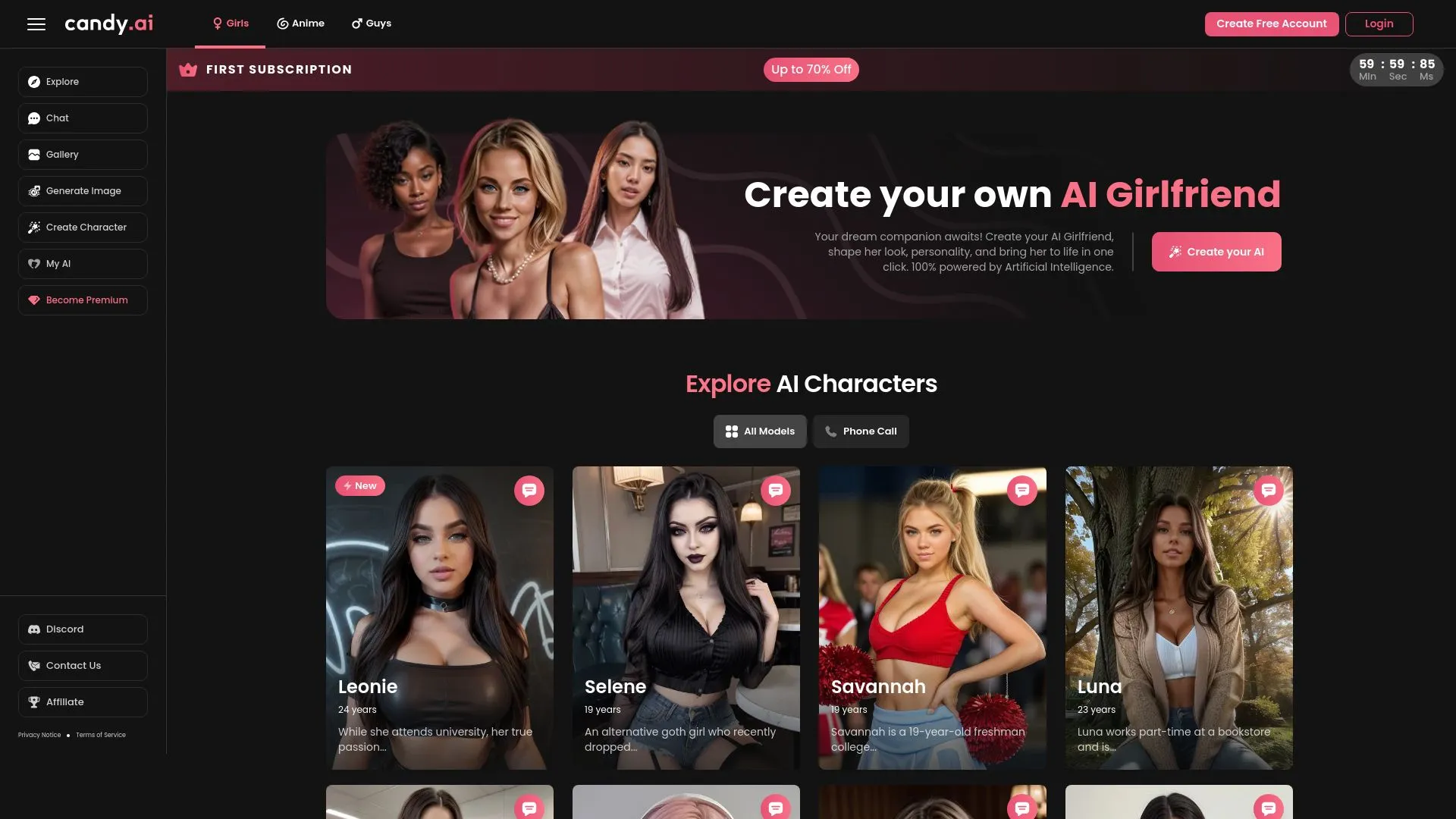Undress AI: Advancements in Image Manipulation Technology
Undress AI represents a major advancement in image manipulation technology. It leverages deep learning and neural networks to effectively simulate nudity by seamlessly removing clothing from images. While this tool can be beneficial for creative sectors like fashion and entertainment, it’s essential to think through the ethical and legal implications that arise.
Key Takeaways
- Undress AI employs sophisticated image manipulation techniques powered by deep learning and neural networks to achieve realistic garment removal.
- Extensive data training boosts image accuracy and processing speed, allowing for real-time interaction.
- This technology finds applications across various industries, including fashion design, entertainment, and media, meeting a range of creative demands.
- Ethical concerns related to Undress AI include the risk of misuse for cyberbullying and the creation of non-consensual imagery.
- It’s vital to grasp the legal ramifications, particularly regarding the potential criminalization of minors who might unwittingly engage in creating inappropriate content.
Using Undress AI Responsibly
Using such a tool responsibly is key. Always prioritize consent and think ahead about how the images will be used. Familiarizing yourself with the legal landscape surrounding image manipulation can help you navigate potential pitfalls effectively.

Unlock Your Free Trial of CandyAI Today!
Experience personalized interactions and discover a new way to connect—try CandyAI risk-free!

Unlock Your Free Trial of CandyAI Today!
Experience personalized interactions and discover a new way to connect—try CandyAI risk-free!

Definition and Technology
Undress AI employs advanced algorithms to create images that give the impression of nudity by removing clothing. This technology leverages deep learning and neural networks, a branch of machine learning that mimics brain function to process data.
Key Components of Undress AI
- AI Undressing: At its core, the technology uses image manipulation techniques coupled with artificial intelligence to render lifelike outputs. By analyzing patterns in numerous images, the AI learns how clothing can be realistically removed while preserving the natural shape of the body.
- Deep Learning: This involves training the model on vast datasets. As the AI processes more images, it improves its ability to generate accurate renditions, enhancing realism.
- Neural Networks: These algorithms are designed to recognize and replicate complex features of images. By utilizing multiple layers of processing, they extract intricate details, ensuring a seamless transformation when clothing is removed.
While the concept is fascinating, always consider the ethical implications of using such technology. Understanding its capabilities is essential for responsible application.
Understanding the Technology Behind Undress AI
Key Features of Undress AI
Undress AI leverages several advanced technologies that combine to create an effective tool for image processing. Here are some key features:
- Advanced Image Recognition: By utilizing convolutional neural networks (CNNs) trained on extensive datasets, the technology accurately identifies and segments clothing. This ensures that the removal of garments is precise and realistic.
- Real-Time Processing: Speed matters. The AI can process images swiftly with minimal delay. This capability significantly improves the user experience, allowing for seamless interaction.
- Semantic Understanding: This technology goes beyond mere image recognition. It comprehends clothing semantics, distinguishing between various articles and styles. As a result, it delivers highly accurate outcomes, making it versatile across different scenarios and user needs.
These elements work together, creating a powerful tool that enhances the way we interact with images and clothing representation. Understanding these technologies can help users appreciate the capabilities of Undress AI and make the most of its features.
Assessing the Applications and Uses
Artistic and Design Ventures
Undresser AI has found a niche in artistic and design projects. Artists and designers leverage this tool for creating provocative content. Its applications span several industries, including:
- Fashion: Designers can explore new looks and styles without the constraints of physical garments.
- Entertainment: Filmmakers and content creators tap into its capabilities for visual storytelling.
- Media: Advertisers use Undresser AI to craft attention-grabbing visuals that stand out.
These diverse applications showcase how this technology caters to the creative needs of various fields.
Interactive Editing Features
The tool stands out because of its interactive editing capabilities. Users gain access to customizable controls, making clothing removal not just a feature but an engaging experience. This flexibility allows for:
- Tailoring visuals to specific artistic visions.
- Experimentation with different styles and aesthetics.
- A more dynamic interaction with the content being created or edited.
This level of interactivity broadens the appeal of Undresser AI, offering capabilities that resonate with both novices and seasoned creators. Its innovative approach helps foster creativity while providing practical solutions for various artistic projects.
Tackling the Ethical Risks and Concerns
Key Ethical Risks
Addressing the ethical risks associated with Undresser AI is crucial. Several concerns arise from its use:
- Inappropriate Content: The tool can expose users, particularly minors, to harmful material, potentially leading to mental health issues related to bullying and abuse.
- Cyberbullying: This technology may be misused for creating nonconsensual images, raising legal and ethical challenges.
- Rise of CSAM: There’s a significant increase in Child Sexual Abuse Material (CSAM) detected in AI-generated imagery, highlighting urgent safety and legal implications.
It’s essential to implement safeguards to mitigate these risks, ensuring the technology serves its intended purpose without compromising user safety.
Navigating Legal and Regulatory Challenges
Illegality of Deepfake Distribution
The rise of deepfake technology has led to serious legal issues, particularly surrounding the creation and distribution of intimate deepfakes. Laws are becoming stricter, emphasizing the importance of regulating these technologies. In many jurisdictions, sharing or generating non-consensual deepfakes is now illegal. This shift makes it essential for creators and users to understand the legal landscape related to deepfakes and the potential consequences of their misuse.
Legal Implications for Minors
AI-generated child sexual abuse material (CSAM) carries severe repercussions, especially for minors. Children may accidentally create or share such content, unaware of its legal ramifications. This situation raises both legal and ethical concerns, highlighting the need for education and awareness around the risks of AI technology.
Key points include:
- Minors may be subject to criminal charges even if they don’t comprehend the implications.
- Legal actions not only affect the child but can also have ripple effects on families and communities.
- Awareness campaigns and preventive measures are vital for reducing risks and protecting vulnerable groups.
Understanding these challenges is critical to ensuring safe practices in AI technology use.
Addressing Biases and Community Feedback
Understanding Biases in AI Modeling
AI modeling runs the risk of reflecting and amplifying existing societal biases. Gender and ethnic biases can lead to the generation of hypersexualized and derogatory imagery. This effect is particularly pronounced for women and marginalized groups. Recognizing this issue is crucial, as it directly impacts how individuals are represented and perceived in digital spaces. Developers and users alike should advocate for algorithms that prioritize fairness and inclusivity.
Feedback from the community plays a vital role in shaping the future of AI applications like Undresser AI. User ratings, comments, and suggestions provide insights into how the technology is perceived and its impact on users. Similar platforms, such as Clothoff.io and N8ked, are also influenced by market reactions. Users express a clear demand for alternatives that counteract these biases and enhance user experience in a responsible manner.
Listening to community insights helps developers adjust their approaches and ensures that products meet user expectations while minimizing potential harm. Engaging with users not only fosters a healthier digital environment but also drives innovation in creating equitable AI solutions.

Top Trending AI Girlfriend Companions This Month
Explore the latest and most popular AI girlfriend generators that are capturing attention this month. Each of these innovative tools offers a unique way to engage with artificial companionship.

Unlock Your Free Trial of CandyAI Today!
Experience personalized interactions and discover a new way to connect—try CandyAI risk-free!
Latest Statistics and Figures
In September 2023, 24 million people visited undressing websites, according to a report by the social network analysis company Graphika.
- There was a 2000% increase in spam referral links to ‘deepnude’ websites in 2023, with 34 providers receiving over 24 million unique visitors in one month.
- A survey by Thorn found that one in every 10 minors in the US knows peers who created deepfake nudes.
Historical Data for Comparison
- From 2019 to 2022, cases of ‘self-generated’ child sexual abuse material (CSAM) circulating online increased by 417%, although the term ‘self-generated’ is often misleading as it usually involves coercion.
- The Internet Watch Foundation reported over 11,000 potentially criminal AI-generated images of children on a dark web forum dedicated to child sexual abuse material (CSAM) between 2019 and 2022.
Recent Trends or Changes in the Field
- The use of AI to undress women in photos has seen a significant surge in popularity, with numerous new services emerging since the advancement of AI technology.
- Big tech companies like TikTok, Meta, and Google have taken steps to curb these apps, such as blocking keywords and removing ads, but these efforts have not been entirely successful.
- Telegram has become a hub for these services, with hundreds of channels offering “nudifying” tools and services.
Relevant Economic Impacts or Financial Data
- Undress AI services often operate on a freemium model, offering free credits followed by charges, with “undressing” packages ranging between Rs 199 and Rs 19,999 (approximately $2.50 to $250 USD).
Notable Expert Opinions or Predictions
- Sam Gregory, executive director of Witness, an organisation promoting the ethical use of generative AI, notes that these tools use generative AI models trained on extensive data of female-identified bodies, which can perpetuate male fantasies and biases.
- Experts predict further instances of online harm, including sextortion and the creation of child sexual abuse material (CSAM), as these tools continue to target girls and women disproportionately.
Frequently Asked Questions
1. What is Undress AI?
Undress AI is a type of tool that uses artificial intelligence to remove clothes from individuals in images, creating the illusion of a nude body. It leverages advanced AI algorithms, including deep learning and neural networks, to process and analyze images.
2. How does Undress AI work?
The technology behind Undress AI employs several techniques to deliver accurate results, including:
- Advanced Image Recognition: It uses convolutional neural networks (CNNs) to recognize and segment clothing from images.
- Real-Time Processing: The AI performs processing with minimal latency, enhancing the user experience.
- Semantic Understanding: This allows the AI to distinguish between various clothing articles and styles effectively.
3. What are the applications of Undress AI?
Undress AI is utilized in various fields, notably:
- Artistic and Design Projects: Artists and designers use it for provocative content creation.
- Industry Applications: It finds applications in fashion, entertainment, and media.
- Interactive Editing: Users can customize clothing removal, adding to its versatility.
4. What ethical risks are associated with Undress AI?
There are significant ethical concerns related to Undress AI, such as:
- Inappropriate Content: The tool can expose users, especially minors, to harmful content.
- Cyberbullying: It can facilitate the creation of nonconsensual nude images.
- Increased CSAM: There has been a notable rise in Child Sexual Abuse Material due to misuse of AI-generated imagery.
5. What are the legal and regulatory challenges of Undress AI?
The distribution of intimate deepfakes is now illegal, which underscores the need for:
- Strict Regulations: There’s an emphasis on regulating such technologies.
- Minors’ Implications: Children may unknowingly create or share illegal images, raising serious ethical issues.
6. How does Undress AI address biases in its outputs?
Despite its advanced technology, biases still persist in the outputs of Undress AI, particularly:
- Gender Bias: The AI may perpetuate hypersexualized imagery, mainly affecting women.
- Ethnic Bias: Existing societal stereotypes can be reflected in the generated images.
7. What community feedback has Undress AI received?
Community insights reveal that:
- User ratings and feedback are varied, indicating reactions to the tool and its implications.
- There are alternatives available, such as Clothoff.io and N8ked, which highlight a market demand for different solutions.
8. Can Undress AI affect mental health?
Yes, the use of Undress AI can raise significant mental health concerns, including:
- Bullying: Exposure to harmful content can lead to negative social interactions.
- Abuse: The potential misuse for creating nonconsensual images can have severe repercussions.
9. What constitutes illegal use of Undress AI?
Illegal use of Undress AI includes:
- Deepfake Distribution: Generating and sharing intimate deepfakes is against the law.
- Creation of CSAM: Engaging in activities that result in the production of Child Sexual Abuse Material is both illegal and unethical.
10. What technological advancements contribute to the effectiveness of Undress AI?
Undress AI’s effectiveness is attributed to:
- Deep Learning: Advanced algorithms significantly improve the precision of image manipulation.
- Interactive Features: The tool provides various user controls for customizable experiences.
- Real-Time Analysis: Rapid processing minimizes lag, making it user-friendly.





